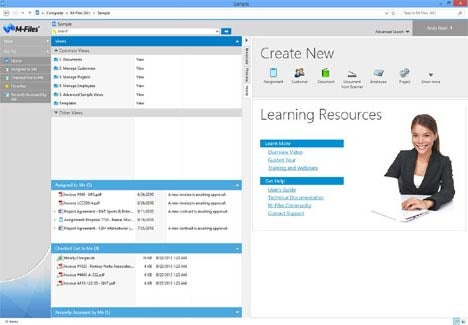Most of the filing techniques that end users rely on to keep track of various documents on their systems are deeply flawed. The filing is based on a file cabinet metaphor that the original developers of the PC created to mirror the way people managed paper documents in the office. The problem with that approach is that it requires end users to remember what documents are actually related to one another.
M-Files Corp. has decided that the time has come to leverage a more sophisticated approach to managing content. Rather than relying on an antiquated file system, the company’s namesake enterprise content management (ECM) combines metadata and a sophisticated content tagging system that automatically keeps tracks of all related files.
This week, M-Files released version 10 of its ECM offering, which sports a new user interface and an array of additional quality assurance and compliance management tools. According to Greg Milliken, vice president of marketing, the new UI makes it easier for end users to navigate files using the metadata management tools that the company has baked into M-Files.
Milliken says that when you take a step back, it becomes clear that organizations are trying to impose unnatural workflows on top of an archaic file management metaphor.
Customers have the option of deploying M-Files on premise, in the cloud, or in a hybrid manner that allows M-Files to be deployed in a way that federates the management of documents across a hybrid cloud computing environment.
People have a tendency to apply new technologies to accelerate an existing process, but at some point we inevitably discover that the technology can be used to transform the process for the better. It would appear that time has finally arrived to let that transformation occur in the digital age where a centuries-old approach to managing files should no longer be required.




